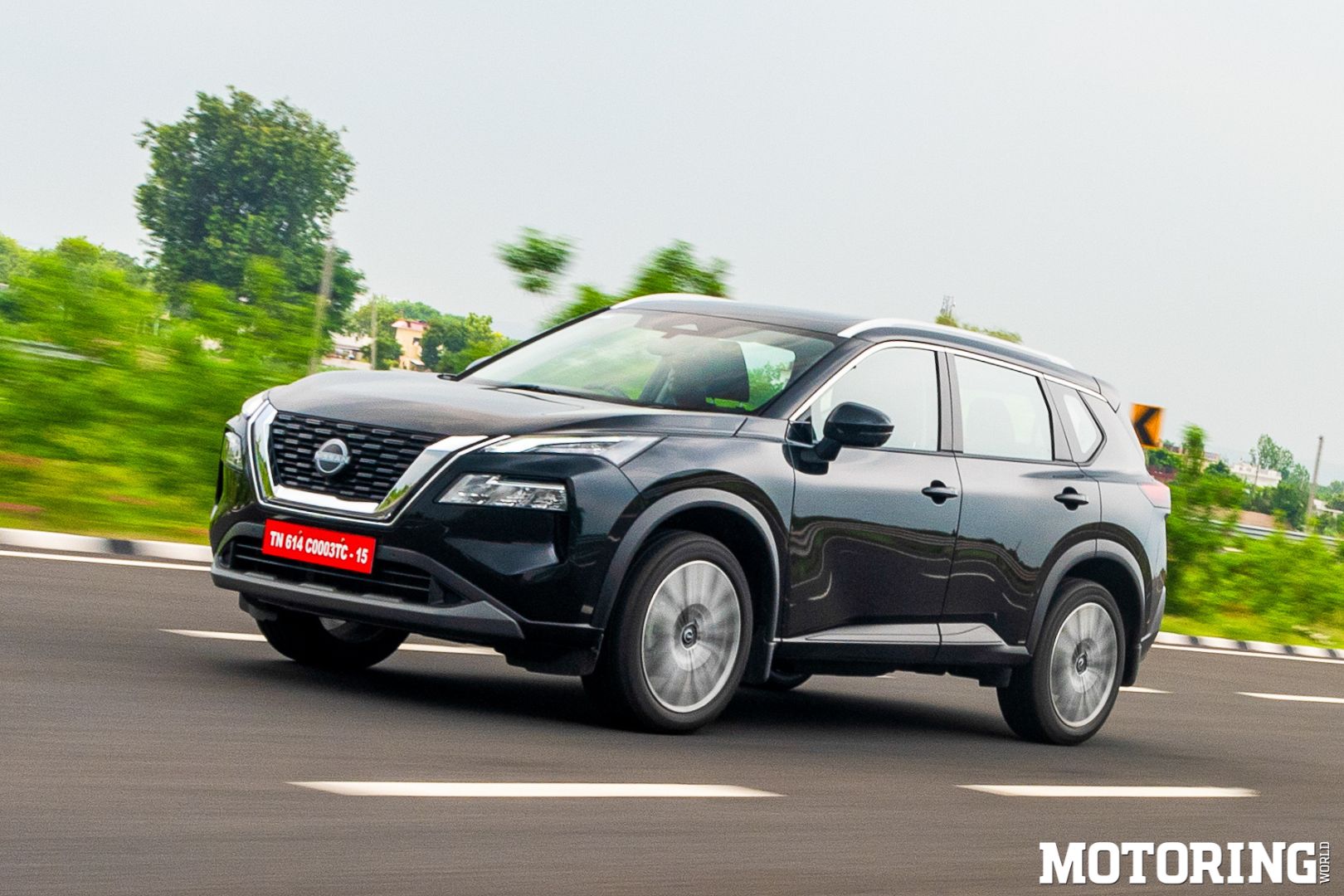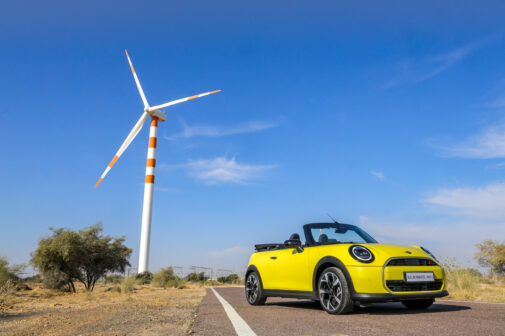Let’s be honest for a second here, and this is, in no way, degrading Nissan’s efforts in India; it’s just how things have fared for the Japanese carmaker. Despite having been around for over 15 years, Nissan hasn’t had the best time in India, even though there have been short bursts of success here and there. The car maker took a gutsy approach with the X-Trail back in 2005, then came the Teana, the Micra, the Sunny, the GT-R (yes that happened, too!), and eventually it all came down to the Magnite.
Now, after quite a while, there is finally a new Nissan car in India. The X-Trail has made a comeback in its fourth-generation guise, and it’s part of the carmaker’s plan to get back on track, ahead of its new-generation SUVs that are coming in 2025. There is no diesel option this time around, no all-wheel drive either, but overall does this particular X mark the spot?
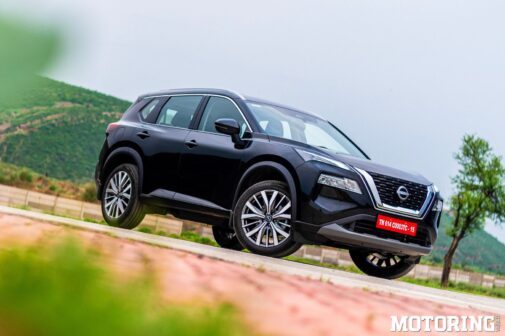
Since we are an SUV-crazy market at the moment, it’s nice to see that the fourth-gen X-Trail has the looks of a ladder-frame SUV, and yet there is some sophistication in its design; basically a Nissan trait. However, strangely, a certain ‘daddy’ of SUVs made the X-Trail look surprisingly smaller when parked side by side, and that’s despite the Nissan standing on 20-inch wheels.
The black paint scheme is one of the three options available; the other two being ‘champagne silver’ and ‘pearl white’, which, while still good enough on their own, look rather plain in comparison to the black car we drove. We got multiple people taking second glances at the car, and even a cop stuck in traffic next to us enquiring about it. However, the side profile might also remind you of a certain Korean MPV; I’ll leave it to you to name that one.
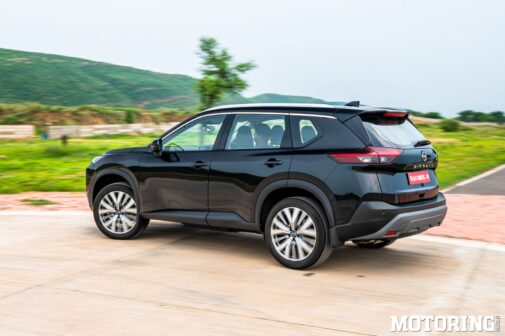
It’s from the rear that the new X-Trail will pass off as just another SUV, and the design of the tailgate especially reminds me of the Kicks (ring some bells?) However, the X-Trail’s design will certainly not offend anyone, and while this may be a subjective matter, it does look like a smaller Patrol, which may help.
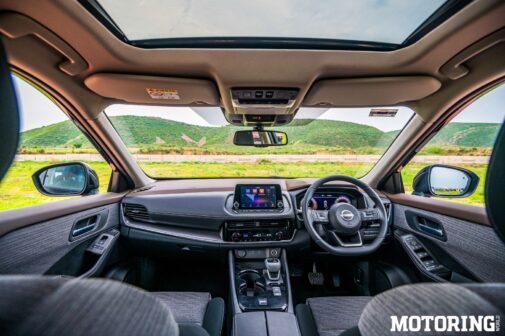
Step inside the X-Trail and you’ll find soft-touch leatherette upholstery on the dashboard, while the doors feature a mix of leatherette and fabric. The seats, however, get complete fabric upholstery. This is important to highlight for two reasons; while the fabric upholstery looks dated for a car of this segment, it is actually rather suitable for our weather conditions.
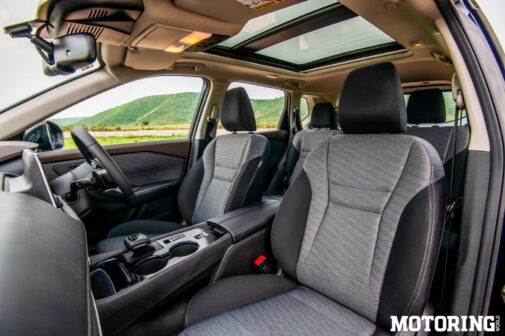
Having spent most of my time in the driver’s seat, I was genuinely comfortable the entire time. The steering is adjustable for rake and reach, the controls fall to hand very easily and the seat offers a good view of the road. The A/C made things chilly, too, in a matter of mere seconds, performing quite well even at the medium levels.
I couldn’t spend much time in the second row of the car, but since there’s a huge hump below the rear seats, it will be a challenge for taller passengers. While I managed to find somewhat decent under-thigh support, taller passengers may find the rear cabin a little cramped.
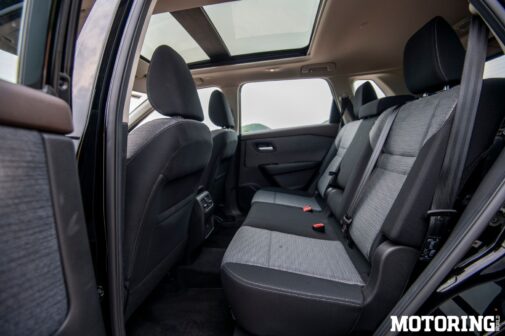
As for the third-row, entry and exit is not particularly easy, and it’s best suited to that annoying relative with claustrophobia. Boot space should be enough with the third-row folded, but even if the seats stay up, Nissan offers a rather unique parcel tray to hide your belongings without having to fold your seats down.
Nissan has also done a commendable job of containing NVH levels; there’s barely any engine noise coming inside in Standard mode (Sport mode is a different story), and there’s not much tyre noise either unless you’re going faster over hard concrete patches. The suspension did a good job of cushioning out speed breakers in the city, and it didn’t disappoint on the highway either, maintaining its composure rather well, and staying flat and balanced on the Delhi-Mumbai expressway at higher speeds.
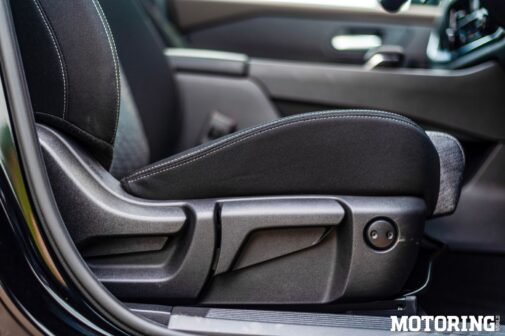
The picture isn’t entirely perfect, though. The seats aren’t electrically adjustable; you have to use the levers for seat height and recline adjustment. Moreover, there’s no seat ventilation available either, which is a glaring omission in a car that’s going up against the Skoda Kodiaq. The audio system also sounds rather rough when you turn up the volume, feeling like it belongs to a car from a much lower segment. The gear selector is also a little complicated to use, not readily engaging into neutral while parking. It also had the tendency to naturally go into Sport mode while selecting Drive. We also noticed a blind spot monitor on the ORVMs, but they were not active. Maybe that’s Nissan‘s way of hinting at a future update?
Credit where it’s due, the X-Trail never feels like a cumbersome car to drive even in the city, and it is quite easy to park in tight conditions as well. The 360-degree camera is actually clear and on-par for its segment, offering a clear view of everything around you. The automatic wipers were impeccable and proved to be a godsend in the heavy downpour we faced while driving to the shoot location. We also found a tight spot to ‘test’ the cornering abilities of a car, and while it stays balanced for the most part, you will experience some amount of body roll and tyres squealing if you chuck it around hard enough.
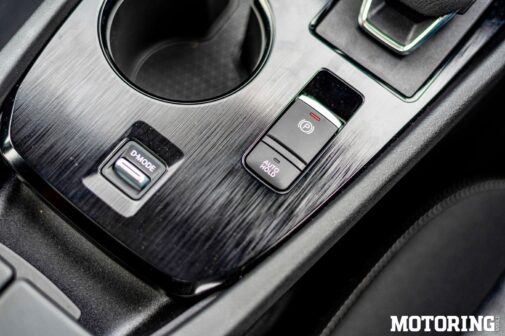
Let’s talk about the engine here; it’s a 1.5-litre mild-hybrid unit paired to a CVT. There are three driving modes on offer: Eco, Standard and Sport. Paddle shifters are also available if you like getting a bit more hands-on. We didn’t bother switching to Eco and drove around in Standard mode for most of the drive, as it felt quite natural, and honestly, more than capable enough to do the job. The CVT transmission does a nice job of holding revs in both the Standard and Sport modes, and while the engine is responsive in Standard itself, it gets a bit more livelier in Sport. This also results in the car becoming quite vocal in Sport if you push the throttle hard enough. It is important to note that all of this was with two people and two bags on board. I am curious to see how the X-Trail fares with a full load of people and luggage, but for now, I can admit I considered dropping Govind all the way to Mumbai; the X-Trail just felt that comfortable on the expressway.
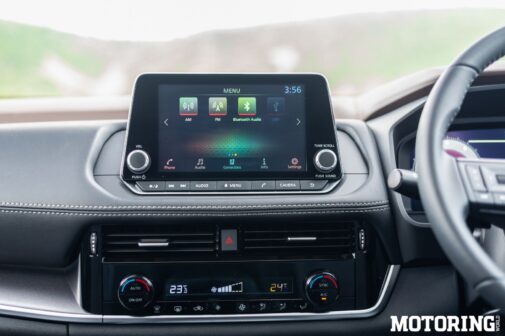
With the X-Trail, Nissan is resuming its CBU operations, and it’s fairly obvious that it will go up against the Skoda Kodiaq, with a price tag upwards of Rs 40 lakh. The X-Trail gets the basics right; it’s a nice, easy car to drive, both in the city and out on the highway, the engine feels more than enough, the chassis has also been tuned very well, and the number of features that it offers work pretty well, too.
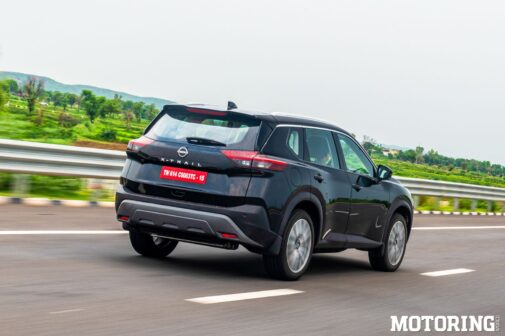
That said, the X-Trail isn’t going to be for everyone either. At the price tag that it is likely to carry, we feel Nissan missed an opportunity here, considering the lack of all-wheel drive, tight space in the middle row, no ventilated seats, no electric seat adjustment and, unbelievably, not even a spare tyre. Those who do buy the new X-Trail will certainly not regret it. However, knowing Nissan’s true capabilities, this truly feels like a missed opportunity in what is otherwise a very sorted package.





